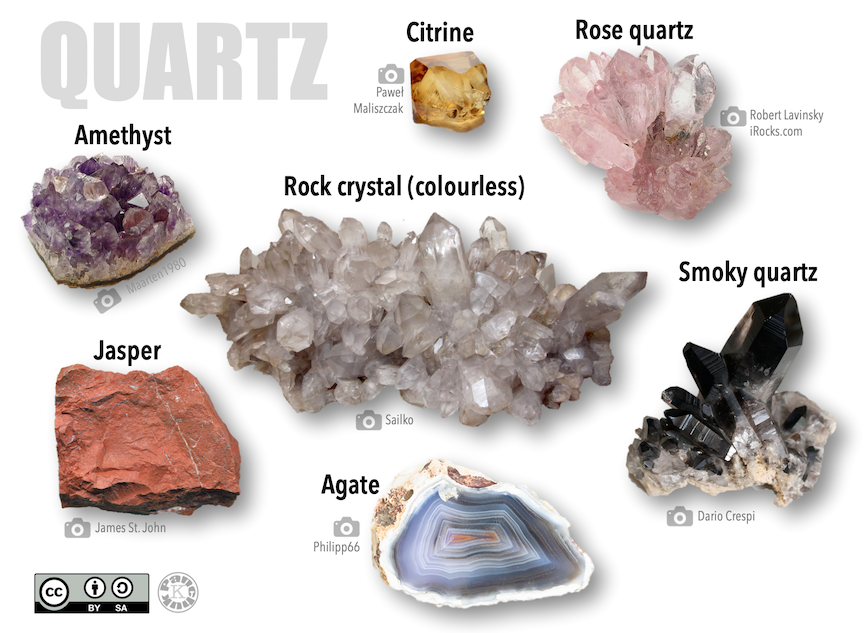Minerals generally named on basis of Physical property magnetic magnetite predominant element Cr Chromite Ba BariteLocality Franklin New Jersey Franklinite and Colour Albus LwhiteAlbite Physical properties of minerals have distinguishing physical properties that in most cases can be used. Luster ranges from metallic highly reflective and opaque to dull nonreflective and opaque.

Physical Properties Of Minerals Laboratory Manual For Earth Science
Identifying minerals by physical properties Color.

. Saltiness ability to dissolve magnetism fluorescence ect. Some minerals have special properties that can be used to help identify them. Among the nonmetallic glosses we find the silky clear greasy glassy resin and diamonds Physical Properties of Minerals SF.
Density and specific gravity. The brightness of a mineral is affected by the brightness of the light used to observe the mineral surface. The two main types of brightness are metallic and not metallic.
Which properties are used to identify minerals. Color streak hardness cleavage specific gravity crystal form and others. Unique properties for only a few minerals.
Cleavage or the characteristic way a mineral breaks depends on the crystal structure of the mineral. Luster describes the way a mineral reflects light. The physical properties of minerals are determined by the atomic structure and crystal chemistry of the minerals.
Forms and Types 458 Mineral Strength. Transparency - Objects are visible when viewed through a mineral. They also have specific physical properties that scientists can use to identify them without resorting to looking at them under a microscope.
The way the surface reflects light. Natural occurring Inorganic nature Solid State Definite chemical composition Definite ordered atomic structure The physical properties of a mineral use View the full answer. Tenacity Hardness Cleavage.
2 See answers Advertisement. Other characteristics may be useful in identifying some minerals. The external shape of a mineral crystal or its crystal form is determined largely by.
Read The Difference Between Rocks and Minerals. These properties can include. Optical Properties of Minerals.
Color and luster describe the minerals outer appearance. Special Properties fluorescence chemical RXN magnetism taste Color. Crystal shape or habit.
Color streak luster density crystal shape cleavage and fracture are the main characteristics but there are some special properties that only some minerals posses such as fluorescence and magnetism. The appearance color some minerals have various colors color can be affected by long exposure to air and water and impurities. Diaphaneity or Amount of Transparency.
The five characteristics of a mineral are. Use an on-line virtual lab exercise to identify minerals using a mineral identification key. The following physical properties of minerals can be easily used to identify a mineral.
Baseball120988766 baseball120988766 07242018 Biology Middle School answered Which properties are used to identify minerals. To help with identification geologists must look closely at the physical properties of a mineral. These properties can include.
Date_____ Describe the physical properties commonly used to identify minerals. Get the answers you need now. Taste - Taste can be used to.
The most obvious property of a mineral its color is unfortunately also the least diagnostic. The most common physical properties are crystal form color hardness cleavage and specific gravity. In the same way.
Translucency - Light but not an image is transmitted through a mineral. Always check for luster on a fresh surface. Lab Exercise 3 Minerals Name_____ The goals and objectives for this lab are.
Opaqueness - No light is transmitted even on the thinnest edges. The appearance of a mineral the least reliable. Streak is the color of the powder.
The mass of a substance per its volume. Many minerals exhibit various colors. Color streak hardness cleavage specific gravity crystal form and others.
A distinction is made between the color of minerals in individual crystals and lumps of ore the color of minerals in transparent thin sections under the microscope the color of minerals in polished sections in reflected light and the color of a minerals streak the color of the fine powder of the mineral. The color of a mineral is the most important identifying characteristic for the amateur mineralogist. Luster ability to transmit light color and streak.
Mohs Hardness Scale is used to compare the hardness of minerals. To help with identification geologists must look closely at the physical properties of a mineral. Describe and identify the differences between minerals and rocks Identify by sight some common rock-forming minerals.
Density refers to mass per unit volume. The resistance of a mineral to being scratched. Minerals each have their own specific chemical composition and structure that gives them distinction from other similar minerals.
Tenacity hardness cleavage and fracture. You may need to chip off a small portion to expose a clean sample. Dull glassy pearly rough.
CRYSTALS One of the best ways to identify a mineral is by examining its crystal form external shape. Measuring it is the first step in mineral identification. Luster Light Transmission Color Streak 633 Crystal Shape of Minerals.

Lab 8 Mineral Identification Mineral Identification Mineral Identification Lab Lab Image



0 Comments